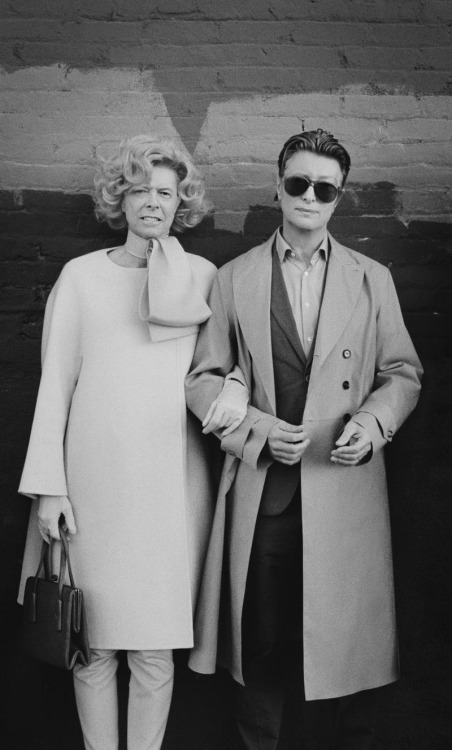 In October, Edward J. Ward of Wisconsin pulled his rented U-Haul van up to the steps at 54 White Street and unloaded 46 giant plastic tubs containing hundreds of magazines, music folios, LPs and 46,000 forty-fives, mostly country. All of this material is now catalogued in our database and integrated into our ever-growing country collection.
In October, Edward J. Ward of Wisconsin pulled his rented U-Haul van up to the steps at 54 White Street and unloaded 46 giant plastic tubs containing hundreds of magazines, music folios, LPs and 46,000 forty-fives, mostly country. All of this material is now catalogued in our database and integrated into our ever-growing country collection.
Maybe every Ed on Earth loves country, because we launched this focused collection when Ed Salamon, the former Executive Director of the Country Radio Broadcasters Assoc., donated 11,460 singles, 3300 LPs, 250 CDs and 65 seventy-eights in ’02. Add in our materials of 600 books, 5,843 CDs (haven’t sorted the singles yet) and 2,313 LPs and it look like the beginning of a pretty serious group. All we need now is a patron to help create a named collection here like the Keith Richards’ Blues Collection! All suggestions welcome, as we wait for a call from Taylor Swift…
Of great interest are Mr. Ward’s 167 songbooks focusing on folks and country music, from the 1930s through the 80s. We’ve started scanning these, so here’s some snazzy covers just for fun and the list generated from our cataloging of the entire collection.



• 100 Great Country and Western Songs (Hill and Range Songs, Inc., 1962).
• 100 WLS Barn Dance Favorites (M.M. Cole Pub. Co., 1935).
• 33 Prison and Mountain Songs (Shapiro bernstein & Co., 1932).
• 39 Country and Wester Songs (Charles Hansen Pub., 1968).
• Al Clauser & Oklahoma Outlaws Songs of the West (American Music Inc., 1939).
• American Cowboy Songs (Robbins Music Corp, 1936).
• Arkansas Woodchoppers : World’s Greatest Collection of Cowboy Songs with Yodel Arrangement (M.M. Cole Publishing Co., 1931).
• Arkansas Woodchoppers (M.M. Cole Pub. Co, Chicago, Il, 1931).
• Arkansas Woodchoppers Cowboy Songs (M.M. Cole Pub. Co., Chicago, Il, 1932).
• Arkansas Woodchopper Square Dance Calls (M.M. Cole Pub. Co., Chicago, Il, 1940).
• Arkansas Woodchoppers : World’s Greatest Collection of Cowboy Songs with Yodel Arrangement (M.M. Cole Publishing Co., 1932).
• Arlen & jackie Vaden, The Southern Gospel Singers (KXEL, Waterloo, Iowa, 1957).
• Arling Schaeffer’s Barn Dance (M.M Cole Pub. Co, 1933).
• Arthur Smith’s Original Folk – Folio No. 1 (American Music Inc., 1943).
• Arthur Smith’s Original Folk Songs (American Music Inc., 1943).
• Asher Sizemore and Little Jimmi (Asher Sizemore, 1934). Includes B&W glossy photo of Sizemore & Little Jimmie.


 • Bill Scott’s Song & Photo Album – No. 1 (Kelly Music Pub., 1944).
• Bill Scott’s Song & Photo Album – No. 1 (Kelly Music Pub., 1944).
• Blaine Smith Favorite Songsm, Poems, Pictures (Russ Hull’s Country Music, 1942).
• Bluegrass Favorites (Karamar Pub., ).
• Bob Acher’s Home Folk Favorites (Acuff-Rose Pub., 1943).
• Bob Miller’s Famous Hill-Billy Songs (Paull-Pioneer Music Corp, , 1933).
• Bob Miller’s Folio Full of Song Hits (Bob Miller Inc., 1934).
• Bob Nolan’s Folio of Cowboy Classics – No. 1 (American Music Inc., 1939).
• Bob Nolan’s Folio of Cowboy Classics – No. 2 (American Music Inc., 1940).
• Bob Nolan’s Folio of Original Cowboy Classics – No.1 (American Music Inc., 1939).
• Bob Nolan’s Folio of Original Cowboy Classics – No.2 (American Music Inc., 1940).
• Bradley Kincaid – Filio No .12 (Peer International Corp, 1941).
• Carson J Robison’s Mountain Ballads ╔ (M.M. Cole Publishing Co., 1930).
• Carson J Robison’s Mountain Ballads ╔ (M.M. Cole Publishing Co., 1930).
• Carson Robison Collection (Robbins Music Corp, 1936).
• Carson Robison’s Mountain Ballads & Old Time Songs (MM Cole, Chicago, Il, 1930).
• Charley Pride – His Most Complete Collection (West Coast Pub. Inc., 1971).
• Cliff Carlisle Cowboy and Mountain Songs (M.M Cole Pub. Co, 1936).
• Country Music Souvenir Scrapbook (1968).



• Country Song Round Up (American Folk Pub. Inc, May, 1959).
• Country Song Round Up (American Folk Pub. Inc, Jul, 1959).
• Country Song Round Up (American Folk Pub. Inc, Nov. 1958).
• Country Song Round Up (American Folk Pub. Inc, Sep. 1958).
• Country Song Round Up (American Folk Pub. Inc, Nov. 1954).
• Country Song Round Up (American Folk Pub. Inc, Dec. 1956).
• Country Song Round Up (American Folk Pub. Inc, Feb. 1962).
• Country Song Round Up (American Folk Pub. Inc, Jul. 1960).
• Country Song Round Up (American Folk Pub. Inc, May- 1962).
• Country Song Round Up (American Folk Pub. Inc, Nov. 1962).
• Country Song Round Up (American Folk Pub. Inc, Aug. 1963).
• Country Sounds of the Nashville Stars (Warner Bros, Sever Arts Music, 1968).
• Cowboy Ballads Folio NO. 4 (American Music Inc., Portland, OR, 1940).
• Cowboy Ballads – Folio No. 1 (American Music Inc., 1939).
• Cowboy Ballads – Folio No. 10 (American Music Inc., 1941).
• Cowboy Ballads – Folio No. 4 (American Music Inc., 1940).
• Cowboy Ballads – Folio No. 7 (American Music Inc., 1941).
• Cowboy Ballads – Folio No. 8 (American Music Inc., 1941).
• Cowboy Songs – No. 62 (American Folk Pub. Inc, July, 1959).
• Cowboy Songs – No. 64 (Nov. 1957).
• Cowboy Songs – No. 69 (American Folk Pub. Inc, Fall, 1962).
• Cowboy Songs as sung by John White (Pacific Coast Borax Company, 1934).
• Cowboy Tom’s Round Up Book – Book One (Bibo-Lang Inc., 1933).


• Dale Hunter’s Hill Billy and Cowboy Songs (Chart Music Pub. House, 1934).
• Deluxe Edition Mac and Bob Mountain Songs, Western Songs, Cowboy Songs (M.M. Cole Publishing Co., USA, 1941).
• Dick Foran’s Western Song Classics – Folio No.1 (Cross Music Co, 1943).
• Doc Hopkins & Cumberland Ridgerunners Songs (M.M. Cole Pub. Co., 1936).
• Don White, Carolina Boys Westerm Hill, Country songs (American Music Inc., 1939).
• Dude Martion’s Songs of the Plains (American Music Inc., 1939).
• Eddy Arnold’s Favorite Songs (Hill and Range Songs Inc., Hollywood, CA, 1948).
• Eddy Arnold’s Favorite Songs No. 2 (Hill and Range Songs, Hollywood, CA, 1950).
• Eddy Arnolds Favorite Songs (Hill and Range Songs Inc., 1948).
• Eddy Arnolds Favorite Songs – No. 3 (Hill and Range Songs Inc., NY, NY, 1953).
• Elmore Vincent’s Lumber Jack Songs (M.M. Cole Publishing, 1932).
• Elton Britt’s Famous Recorded Songs (Bob Miller Inc., 1941).
• Ernest Tubb Favorites – Radio Songbook No. 3 (Ernest Tubb Pub., 1944).
• Favorite Old Time Songs & Mountain Ballads (Bradley Kincaid, Mountain Boy of WLS, 1930).
• Favorite Songs of the WLW Boone County Jamboree (M.M. Cole Pub. Co., 1941).
• Five Star Collection of Cowboy Songs (Chart Music Pub. House, 1947).


 • Foggy River Boys (Hill and Range Songs Inc.NY, NY, 1955).
• Foggy River Boys (Hill and Range Songs Inc.NY, NY, 1955).
• Folk and Country Songs (Charlton Publication, Nov, 1957).
• Folk and Country Songs (Charlton Publication, Sept, 1956).
• Folk and Country Songs (Charlton Publication, Sept. 1957).
• Four American Indian Songs, Charles Wakefield Cadman (White-Smith Music Pub., 1909).
• Four Star Folio Cavalcade of Melodies (Southern Music Pub. Co., 1939).
• Fred Scott’s Songs of the Open Trail No. 1 (American Music Inc., 1939).
• Gene Autry and Jimmy Long Cowboy Songs (M.M. Cole Pub. , Chicago, IL, 1935).
• Gene Autry’s Cowboy Songs & Mountain Ballads (M.M. Cole Pub. Co., 1936).
• Gene Autry’s Cowboy Songs & Mountain Ballads (M.M. Cole Pub. Co., 1932).
• Gene Autry’s Folio of Western Songs (Movie Songs Inc., 1947).
• Georgia Crackers – Song Folio No. 1 (American Music Inc., Portland, OR, 1940).
• Grand Ole Opry WSM Picture – History Book (WSM Nic, 1977).
• Hank Williams Country Music Folio (Acuff-Rose Pub., 1948).
• Hank Williams Favorite Songs (Acuff-Rose Pub., 1953).
• Happy Chappies Collection of Outdoor Songs (M.M.Cole Pub. Co., Chicago, IL, 1933).
• Happy Chappies Greatest Collection of Outdoor Songs (M.M. Cole Publishing Co., 1930).
• Happy Jack Turner Cowboy, Home, Mountain Songs (M.M. Cole Pub. Co., 1942).
• Hill and Range Hit Songs – Folio No. 2 (Hill and Range Songs, Inc., 1952).
• Hill-Billy, Prisoner & Mountaineer Song Folio No. 1 (DeSylva, Brown & Henderson, 1933).

• Hillbilly Hit Parade of 1940 (Southern Music Pub. Co., 1941).
• Hillbilly Hit Parade of 1941 (Southern Music Pub. Co., 1941).
• Hillbilly, Cowboy and Standards Songs (Pagani & Bros NY, 1935).
• Home and Hill Country Ballads – Folio No. 1 (American Music Inc., 1939).
• Home and Hill Country Ballads – Folio No. 4 (American Music Inc., 1941).
• Homer Rodeheaver’s Collection of Sacred Songs (M.M.Cole Pub. Co., 1953).
Various• International Alliance of Theatrical Stage Employees and Motion Picture Machine Operators of the United States and Canada ╨ General Bulletins: (, ).
• Jimmie Rodgers (Southern Music Publishing, 1943).
• Jimmie Rodgers Memorial Folio – Volume 1 (Peer International Corp, 1967).
• Jimmie Rodgers Memorial Folio – Volume 2 (Peer International Corp, 1967).
• Jimmy Dean Song Favorites (Robbins Music Corp, 1958).
• Johnny Cash Show Souvenir Song Book (Southwind Music Inc. NY, NY, 1966).
• Lefty Friozzell’s Country Hit Songs (Hill and Range Songs, Inc., 1951).
• Log Cabin Songs by Johnny Crockett (Goodman Music Co, 1932).
• Louise Massey and the Westerners Song Folio (Peer International Corp, 1941).
• Lulu Belle & Scotty Hayloft Jamboree Songbook (Hilliard, Currie Corp., Chicago, IL, 1943).
• Lulu Belle & Scotty’s Happy Valley Songs (Lulu Belle & Scotty, Station WLW, Cincinatti, 1940).
• Lulu Belle & Skyland Scotty : Mountain Songs, Western Songs, Cowboy Songs (M.M. Cole Pub. Co., Chicago, Il, 1941).
• Lulu Belle’s Skyland Scotty’s Home Folk Songs (Scott Wiseman, 1937).
• Mac and Bob (M.M.Cole Pub. Co., Chicago, IL, 1941).
• Mac and Bob’s Collection of Songs (Bob Miller Inc., 1935).
• Mac and Bob’s Mountain, Western ,Cowboy Songs (M.M. Cole Pub. Co., 1941).
• Montana Slim (Wilf Cater) Songs of the Plains & Rockies (Southern Music Pub. Co., 1939). 
• Nashville Songbag (Hill and Range Songs, Inc., 1968).
• New and Original Favorite Songs of Famous Hill Billies (Bibo-Lang Inc. NY, NY, 1934).
• Newest Carson Robison Book (Carson J. Robison, 1936).
• On the Trail (Remick Music Corp, 1945).
• Palls of the Golden West Song Folio No. 1 (American Music Inc., 1942).
• Paul Howard’s Cotton Pickin’ Songs (Acuff-Rose Pub., 1945).
• Paul Howard’s Cotton Pickin’ Songs (Acuff-Rose Pub., Nasjville, TN, 1945).
• Play and Sing (M.M. Cole Publishing House, ).
• Prairie Ramblers & Patsy Montana’s Songs (Bob Miller Inc., 1935).
• Prairie Ramblers and Patsy Montana Collection (Bob Miller Inc. NY, NY, 1937).
• Prairie Ramblers Barn Dance Favorites (Chart Music Publishing House, 1941).
• Ranch Boys Songs of the Plains (M.M. Cole Publishing Co., 1939).
• Readers Digest Country & Western Songbook (Reader’s Digest Asso, 1983).
• Red Foley’s Cowboy Songs & Mountain Ballads (M.M. Cole Pub. Co., Chicago, Il, 1940).
• Rice Brothers and Their Radio Gang (Chart Music Pub. House, 1942).
• Round Up Memories – Songs of the Hill and Range (Shapiro bernstein & Co., 1946).
• Round Up Memories – Songs of the Hill and Range (Shapiro bernstein & Co., 1946).
• Roy Acuff & His Smoky Mountain Songs (Acuf-Rose Pub., 1943).
• Roy Clark’s – Big Note Guitar Song Book (Shattinger Intl Music Corp, 1978).
• Santa Fe Folk Songs and Dances (Mills Music, 1940).
• Santa Fe Rangers Western Songs (Leeds Music Corp, 1946).
• Santos Ranger Ensemble Songs of the Camp Fires (Don Santos Pub. Co., 1949).
• Songs Gene Autry Sings (Western Music Co., 1942).
• Songs of Jimmie Davis (Southern Music Pub. Co., 1937).
• Songs of the Pioneers (Albert E. Brumley, 1970).
• Songs of the Roaming Ranger (Tip Top Publishers, 1935).
• Songs of the Saddle (American Music Inc., 1942).
• Sons of the Pioneers Solg Folio (Cross & Winge Inc., 1936).
• Souvenir Program W-H-O Barn Dance Frolic (Central Broadcasting Co, Des Moines IA, 1936).
 • Tex Ritter Mountan Ballads & Cowboy Songs (M.M. Cole Pub. Co., 1941).
• Tex Ritter Mountan Ballads & Cowboy Songs (M.M. Cole Pub. Co., 1941).
• The New Hank Keene Book (Hank Keene Inc, 1936).
• The Best of Country Music (Best of Country Music, 1984).
• The Big Round-Up of Cowboy Songs (Amsco Music Sales Co., 1934).
• The Carter Family Album of Smoky Mountain Ballads (Southern Music Pub. Co., 1937).
• The Lonely Mountaineers Cowboy/Mountain Songs (Wm. J. Smith Music Co., 1934).
• The Lonesome Cowboy Songs of the Plains and Hills (George T. Worth & Co., 1930).
• The Short Brothers, Jimmie and Leon (American Music Inc., 1943).
• The Wade Mainer Story Picture Songbook (WWNC, Asheville, NC, 1941).
• Tim Spencer’s Sagebrush Symphonies (American Music Inc., 1943).
• Tom Mix Western Songs (M.M. Cole Pub. Co., 1935).
• Uncle Jack and Mary Lou’s Songs You Love To Hear (Southern Music Pub. Co., 1941).
• W.W.VA Radio Jamboree Songs (M.M. Cole Publishing Co., 1940).
• Walter Peterson’s Mountain Ballads & Old Time Songs (M.M. Cole Pub. Co., 1930).
• Warner’s Old Time Songs of the Gay Nineties (Chart Music Pub. House, 1944).
• Webb Pierce, The Wondering Boy, Folio No. 1 (Hill and Range Songs, Inc., 1953).
• Wesern Classics (Chas. H. Hansen Music Co, 1946).
• Witmark’s Peaceful Valley Songs (M. Witmark & Sons NY, 1933).
• WSM Grand Ole Opry History Picture Book (WSM Inc., 1969).
• WWVA Radio Jamboree Famous Songs (M.M. Cole Pub. Co., Portland, OR, 1940).



 Like many of you, I’d imagine, I grew up listening to Raffi Cavoukian, the Egyptian-born Canadian children’s musician singing songs like “Baby Beluga” and “Down By The Bay”—I even have dim memories of going to see him in concert. He’s recently embarked on his first tour in ten years, and now, as both a Canadian and an advocate for children,
Like many of you, I’d imagine, I grew up listening to Raffi Cavoukian, the Egyptian-born Canadian children’s musician singing songs like “Baby Beluga” and “Down By The Bay”—I even have dim memories of going to see him in concert. He’s recently embarked on his first tour in ten years, and now, as both a Canadian and an advocate for children, 































 The "Polar Bear Ice Tray" is a sealed bottle that makes icecubes and then facilitates their easy removal. The sealed container keeps freezer flavors away, and once it's all frozen, you can dislodge the ice by giving the bottle a whack on a countertop and then pour it out of the mouth. Looks like a clever way of solving an old problem, though I haven't tried it myself.
The "Polar Bear Ice Tray" is a sealed bottle that makes icecubes and then facilitates their easy removal. The sealed container keeps freezer flavors away, and once it's all frozen, you can dislodge the ice by giving the bottle a whack on a countertop and then pour it out of the mouth. Looks like a clever way of solving an old problem, though I haven't tried it myself.  Works on Gnats too!
Works on Gnats too!









 We pick a campsite in a quiet neighborhood on an outer ring of the city. To one side of us, some rather abject fraternity gentlemen cower in the lee of their Subaru having Heineken brews. Our closest neighbors are several women in their thirties whom James Dean promptly diagnoses as “horny” by means of divination lost on the rest of us.
We pick a campsite in a quiet neighborhood on an outer ring of the city. To one side of us, some rather abject fraternity gentlemen cower in the lee of their Subaru having Heineken brews. Our closest neighbors are several women in their thirties whom James Dean promptly diagnoses as “horny” by means of divination lost on the rest of us.
